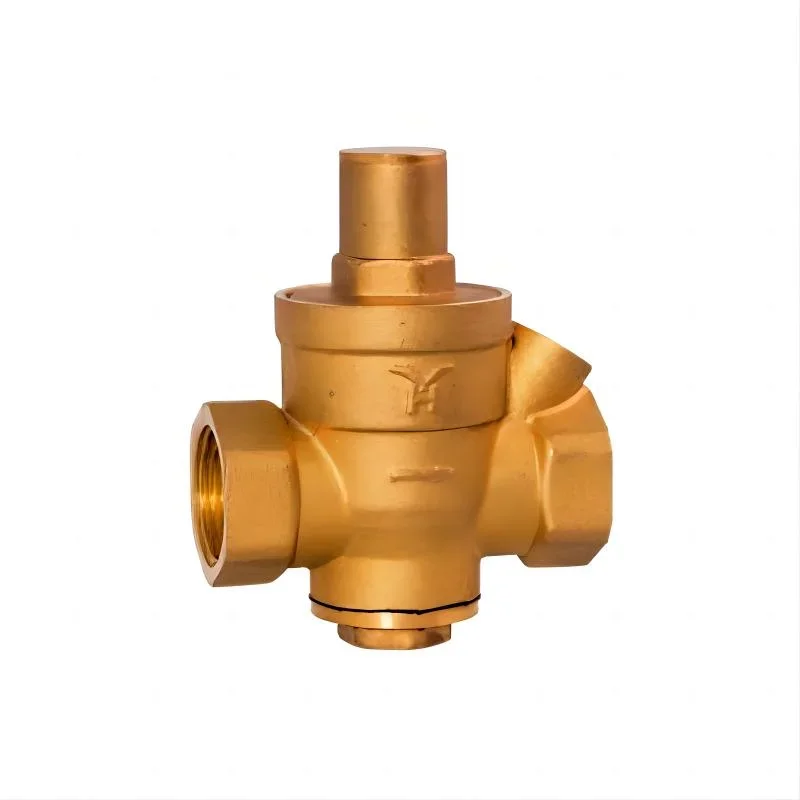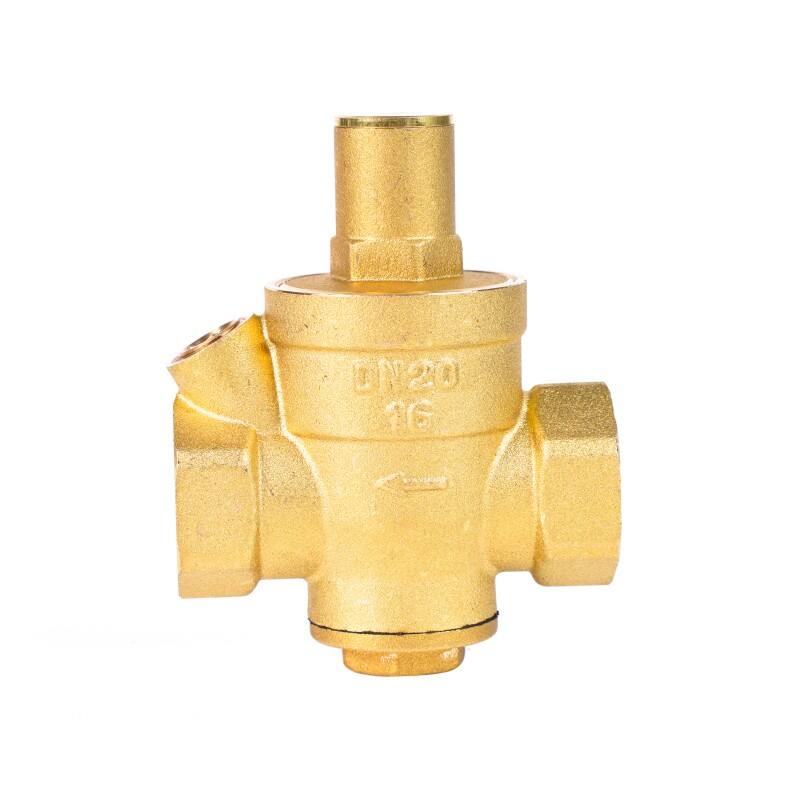Water pressure management represents a critical aspect of modern plumbing and industrial systems, where maintaining optimal pressure levels ensures equipment longevity and operational efficiency. A pressure reducing valve serves as the cornerstone component for achieving precise pressure control, protecting downstream equipment from damage while ensuring consistent performance across various applications. Understanding the proper adjustment techniques for these valves can significantly impact system reliability and reduce maintenance costs over time.

Understanding Pressure Reducing Valve Fundamentals
Basic Operating Principles
The fundamental operation of a pressure reducing valve relies on a spring-loaded diaphragm or piston mechanism that responds to downstream pressure changes. When inlet pressure exceeds the preset threshold, the valve automatically restricts flow to maintain consistent outlet pressure. This self-regulating behavior occurs through a feedback loop where the downstream pressure acts against spring tension, creating a balanced system that adapts to varying flow demands.
Internal components work in harmony to achieve precise pressure control, with the adjustment screw serving as the primary interface for setting desired output pressure. The spring compression determines the force required to open or close the valve seat, while the diaphragm or piston translates pressure changes into mechanical movement. This elegant design ensures reliable operation across diverse operating conditions without requiring external power sources.
Types and Applications
Different valve configurations serve specific applications, ranging from residential water systems to industrial process control. Direct-acting valves work effectively in low-flow applications where simplicity and cost-effectiveness are priorities. Pilot-operated variants handle high-flow scenarios with enhanced accuracy and stability, making them suitable for demanding industrial environments.
Material selection plays a crucial role in valve performance, with brass, stainless steel, and bronze options available for different media compatibility requirements. Temperature and chemical resistance considerations guide material choices, ensuring long-term reliability in challenging operating environments. Understanding these variations helps select the appropriate valve type for specific system requirements.
Pre-Adjustment System Assessment
Pressure Measurement Techniques
Accurate pressure measurement forms the foundation of effective valve adjustment, requiring calibrated gauges positioned at strategic locations throughout the system. Install pressure gauges both upstream and downstream of the valve to monitor inlet and outlet conditions simultaneously. Digital manometers provide enhanced accuracy for critical applications, while analog gauges offer reliable performance for routine maintenance tasks.
Baseline measurements establish reference points for adjustment procedures, documenting existing pressure profiles under various operating conditions. Record pressure readings during peak demand periods and low-usage intervals to understand system behavior patterns. This data proves invaluable when fine-tuning valve settings to accommodate fluctuating demand scenarios.
System Flow Analysis
Flow rate analysis reveals system capacity limitations and helps optimize valve sizing for current and future demands. Calculate flow coefficients to ensure the selected valve can handle maximum expected flow rates without compromising pressure regulation accuracy. Undersized valves create excessive pressure drop, while oversized units may exhibit poor control characteristics at low flow rates.
Identify potential flow restrictions within the system that could affect valve performance, including pipe sizing, fittings, and other components. Document system piping configurations and elevation changes that influence pressure distribution. This comprehensive assessment enables informed decision-making during adjustment procedures and helps prevent common installation mistakes.
Step-by-Step Adjustment Procedures
Initial Setup and Safety Precautions
Safety protocols must precede any valve adjustment activities, including system isolation and pressure relief procedures. Verify that protective equipment is available and that personnel understand emergency shutdown procedures. Gradual pressure changes prevent system shock and equipment damage during adjustment processes.
Position adjustment tools and measurement equipment within easy reach before beginning procedures. Clean the adjustment screw area and remove any protective caps or covers that might interfere with access. Ensure adequate lighting and workspace organization to facilitate precise adjustments and accurate readings.
Pressure Setting Methodology
Begin adjustment procedures with the system at normal operating temperature to ensure accurate pressure readings and proper valve response. Start with the adjustment screw in a neutral position, then gradually increase spring compression to raise outlet pressure or decrease compression to lower pressure. Make small incremental changes, allowing the system to stabilize between adjustments.
Monitor downstream pressure continuously during adjustment procedures, using steady-state readings rather than transient values. The pressure reducing valve requires several minutes to reach equilibrium after each adjustment, particularly in systems with large downstream volumes. Document each adjustment increment and corresponding pressure change for future reference.
Performance Optimization Strategies
Fine-Tuning Techniques
Advanced optimization involves analyzing pressure response characteristics under varying load conditions to achieve superior control performance. Test the valve response during rapid flow changes to verify stability and absence of hunting behavior. Optimal adjustment balances quick response to demand changes with stable operation during steady-state conditions.
Consider installing bypass valves or parallel configurations for applications requiring enhanced reliability or redundancy. These arrangements enable maintenance activities without system shutdown while providing backup pressure control capability. Proper coordination between multiple valves ensures seamless operation and prevents pressure conflicts.
Long-Term Stability Considerations
Seasonal variations in water temperature and system demand patterns may require periodic readjustment to maintain optimal performance. Cold weather increases water density and viscosity, potentially affecting valve response characteristics. Develop seasonal maintenance schedules that account for these environmental factors and system usage patterns.
Establish trending procedures that track pressure performance over extended periods, identifying gradual changes that indicate component wear or system modifications. Regular data collection enables predictive maintenance strategies and prevents unexpected failures. Document all adjustments and system changes to maintain comprehensive operational history.
Troubleshooting Common Issues
Pressure Fluctuation Problems
Pressure instability often results from improper adjustment, undersized valves, or system configuration issues that create feedback loops or resonance conditions. Analyze fluctuation patterns to distinguish between normal system dynamics and problematic behavior requiring intervention. High-frequency oscillations typically indicate valve sizing issues, while slow cycling suggests control system problems.
Install pressure accumulators or surge suppressors to dampen system transients and improve valve stability in challenging applications. These components absorb pressure spikes and provide smooth flow transitions that enhance overall system performance. Proper sizing and placement of these accessories requires careful analysis of system hydraulics and operating conditions.
Maintenance and Replacement Indicators
Recognize symptoms indicating valve maintenance or replacement needs, including inability to achieve desired pressure settings, excessive pressure drop across the valve, or visible leakage from internal components. Degraded performance often develops gradually, making regular monitoring essential for early problem detection.
Internal component wear affects pressure regulation accuracy and response characteristics, manifesting as drift in set pressure over time or increased pressure variation under load changes. Establish replacement criteria based on performance degradation thresholds rather than arbitrary time intervals. This approach optimizes maintenance costs while ensuring reliable operation.
FAQ
How often should pressure reducing valve settings be checked?
Pressure reducing valve settings should be verified every six months during routine maintenance inspections, with additional checks following any significant system modifications or unusual operating conditions. Systems experiencing frequent demand variations or operating in harsh environments may require more frequent monitoring to ensure consistent performance and early detection of potential issues.
What causes a pressure reducing valve to lose its adjustment over time?
Several factors contribute to adjustment drift, including spring fatigue, seat wear, debris accumulation, and temperature cycling effects on internal components. Vibration from nearby equipment or water hammer events can also cause gradual loosening of adjustment mechanisms. Regular maintenance and proper system design minimize these effects and extend valve service life.
Can multiple pressure reducing valves be installed in series for better control?
Installing multiple pressure reducing valves in series can provide enhanced pressure reduction for high inlet pressures or improved control accuracy for critical applications. Each valve should be set to reduce pressure by a reasonable amount to prevent cavitation and ensure stable operation. Proper spacing and individual pressure monitoring enable optimal performance from series configurations.
What is the minimum downstream pressure required for proper valve operation?
Most pressure reducing valves require minimum downstream pressure of 10-15 psi to maintain proper sealing and control accuracy, though specific requirements vary by valve design and application. Insufficient downstream pressure can cause valve chatter, poor regulation, or complete loss of pressure control. Consult manufacturer specifications for exact minimum pressure requirements for specific valve models.

